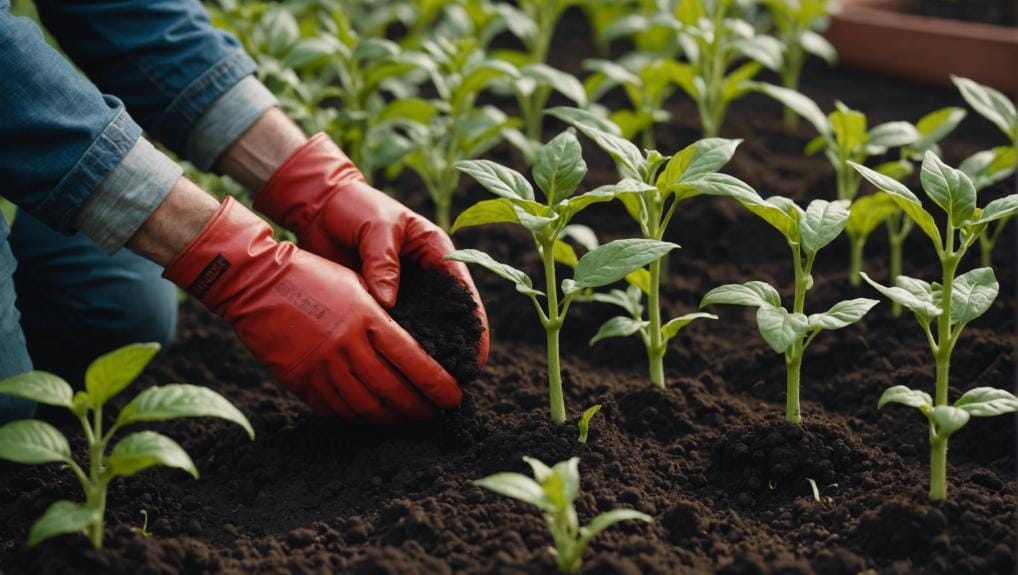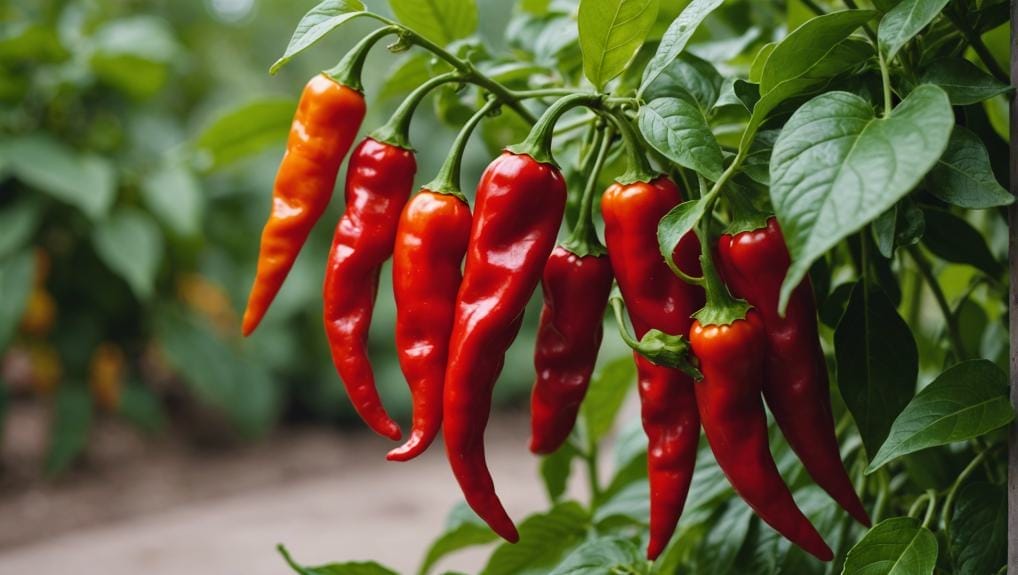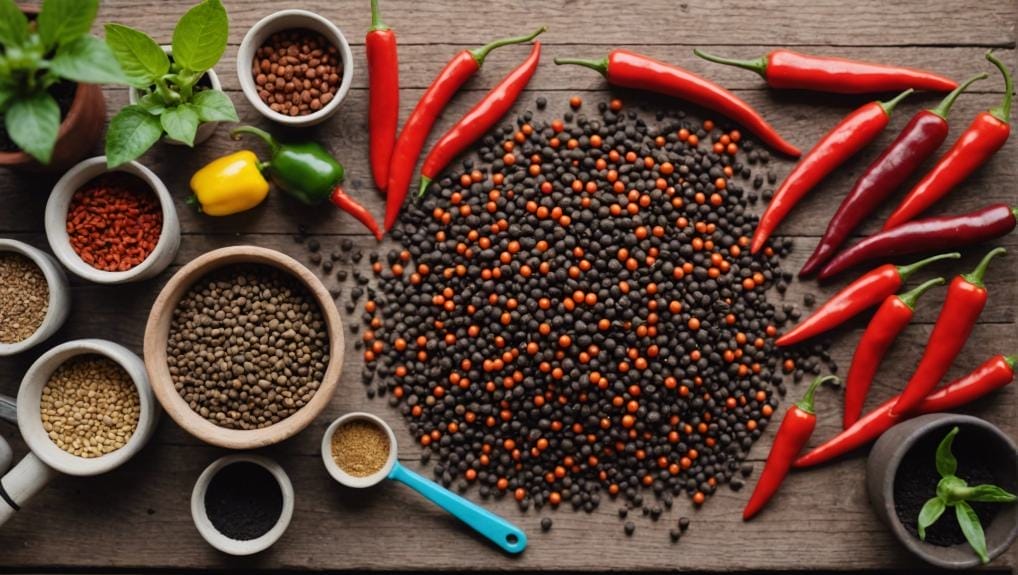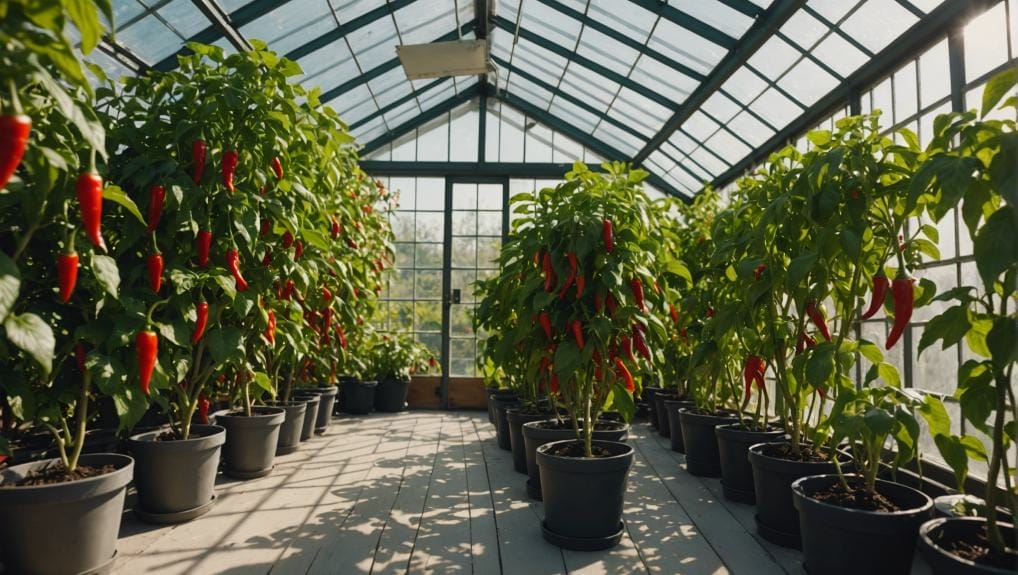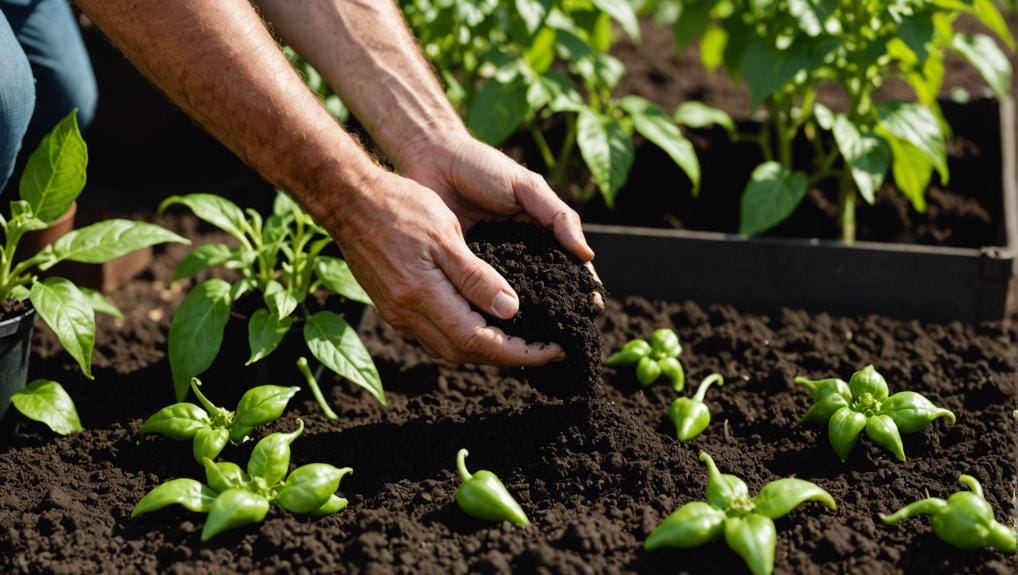When it comes to planting and fertilizing hot peppers, ensuring the right balance is key. From soil preparation to nutrient ratios, each step plays a crucial role in the success of your pepper plants. By following these 10 tips, you can set a strong foundation for healthy growth and abundant yields. But remember, the real magic happens when you master the art of nurturing your peppers throughout their growth cycle. So, let’s start with the basics and uncover the secrets to cultivating thriving hot pepper plants.
Soil Preparation for Hot Peppers
To prepare your soil for planting hot peppers successfully, ensure it’s well-draining and rich in organic matter such as compost. Hot pepper plants have specific nutrient needs, so it’s essential to consider the soil pH, ideally around 6.0 to 7.0, to promote optimal nutrient uptake.
Enhance the soil by incorporating perlite or sand to improve aeration and drainage, creating a healthy root environment for your pepper plants. Additionally, adding aged manure or a balanced fertilizer will enrich the soil, providing the necessary nutrients for the hot peppers to thrive.
Before planting, test the soil fertility levels to determine if any specific adjustments are required to meet the plants’ needs. By taking these steps to ensure your soil is well-prepared and nutrient-rich, you set the foundation for successful growth and bountiful hot pepper harvests.
Importance of Compost Incorporation

Incorporating compost into your soil enriches it with organic matter, benefiting hot pepper plants by improving moisture retention and nutrient availability. Compost serves as a natural fertilizer, increasing soil fertility and promoting beneficial microbial activity crucial for nutrient breakdown and uptake by pepper roots.
Furthermore, the addition of compost enhances soil structure, reducing compaction and facilitating improved root growth and aeration for hot pepper plants. By maintaining a balanced soil pH, compost creates optimal conditions for hot peppers to thrive and produce abundant yields.
Utilizing compost in hot pepper cultivation not only reduces the need for synthetic chemicals but also encourages sustainable practices. Embracing compost as a soil enrichment method aligns with eco-friendly approaches, ensuring the long-term health of your hot pepper plants while supporting a more environmentally conscious gardening routine.
Addressing Nutrient Deficiencies

Enhancing the nutrient uptake of your hot pepper plants is essential for maintaining their health and productivity, especially to address common deficiencies like iron and magnesium. Iron deficiency can lead to chlorosis, manifesting as yellowing of new leaves. On the other hand, magnesium deficiency may cause leaf curling and yellowing in hot pepper plants.
To combat these nutrient deficiencies, consider using organic sources such as chelated iron or Epsom salt. Additionally, adjusting soil pH levels can play a crucial role in effectively addressing nutrient deficiencies in hot pepper plants.
Monitoring your plants for signs of over-fertilization is also important to prevent nutrient imbalance issues. By being attentive to these aspects and providing the necessary nutrients through organic sources, you can help your hot pepper plants thrive and produce bountiful harvests.
Optimal Nutrient Ratios for Peppers
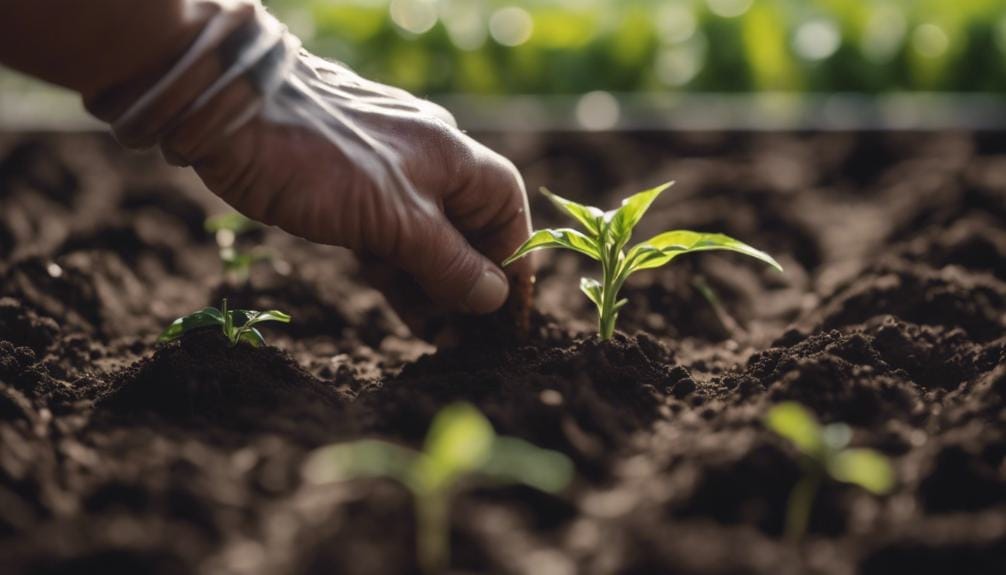
Maintaining a balanced nutrient ratio is crucial for peppers to thrive and produce healthy fruits. The optimal N-P-K ratio for peppers is 5-10-10, where nitrogen supports leafy growth, phosphorus enhances root development, and potassium improves fruit quality. This balance is essential for preventing issues such as sunscald and weak root systems in pepper plants.
Proper nutrient ratios play a significant role in ensuring healthy root systems, robust foliage growth, and abundant fruit development. By providing the right combination of nitrogen, phosphorus, and potassium, you can support overall plant health and maximize fruit production. Neglecting these optimal ratios may lead to stunted growth, poor fruit quality, and reduced yields.
Therefore, paying attention to nutrient ratios is key to achieving thriving pepper plants with strong roots, lush foliage, and plentiful, high-quality fruits.
Monitoring Nutrient Levels

To ensure optimal growth and fruit production in your pepper plants, regularly monitoring soil nutrient levels is essential. By keeping an eye on soil nutrient levels, you can prevent nutrient deficiencies that might hinder plant growth and fruit production.
Testing the soil pH and nutrient levels periodically provides valuable insights for adjusting fertilization practices to maintain plant health. Observing the appearance and growth rates of your pepper plants can also help you identify any potential nutrient imbalances that need attention.
Monitoring nutrient levels not only supports healthy root systems but also promotes robust foliage growth and abundant fruit development in your pepper plants. Therefore, staying proactive in monitoring soil nutrient levels is crucial for ensuring that your plants have access to the essential nutrients they need for thriving growth and prolific fruiting.
Adjusting Fertilization Schedules
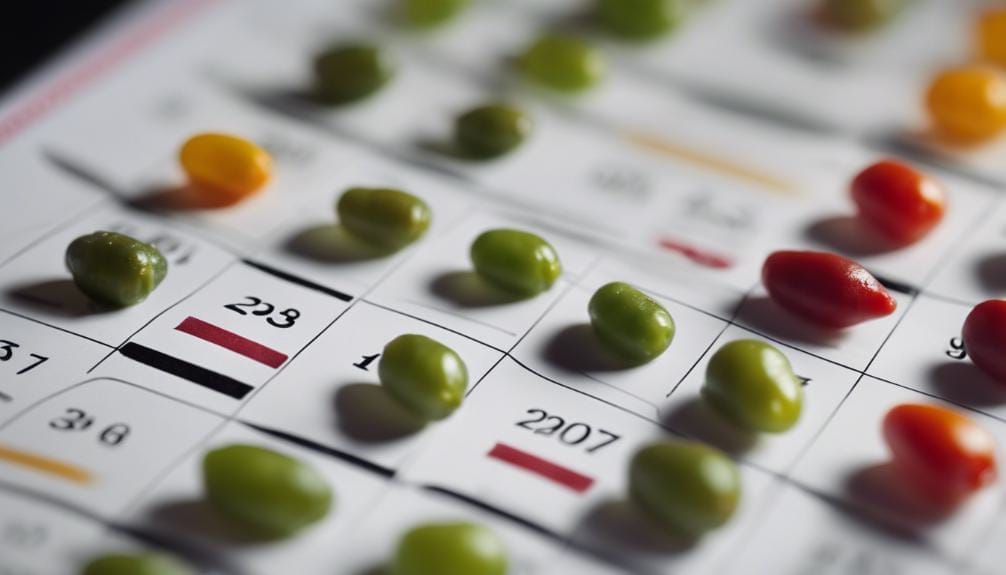
Consider adjusting your fertilization schedules based on the growth stage and nutrient requirements of your pepper plants. Pepper plants require different levels of nutrients at various stages of growth to produce healthy fruit. During fruit development, it’s crucial to increase fertilization frequency to support the plant’s increased demand for important nutrients. While doing so, remember to decrease nitrogen levels and boost potassium levels to enhance fruit quality.
To fertilize pepper plants effectively, choose the proper application method and ensure the nutrients are readily available in the garden soil. Organic fertilizers can be a great option for providing essential nutrients to your plants while maintaining soil health. Monitoring your plant’s response to these fertilization adjustments is key to achieving optimal growth and abundant fruit production.
For personalized advice on adjusting fertilization schedules for your pepper plants, consider consulting gardening experts or extension services. By following these guidelines and making informed decisions, you can help your pepper plants thrive and yield a bountiful harvest.
Application Techniques for Fertilizers
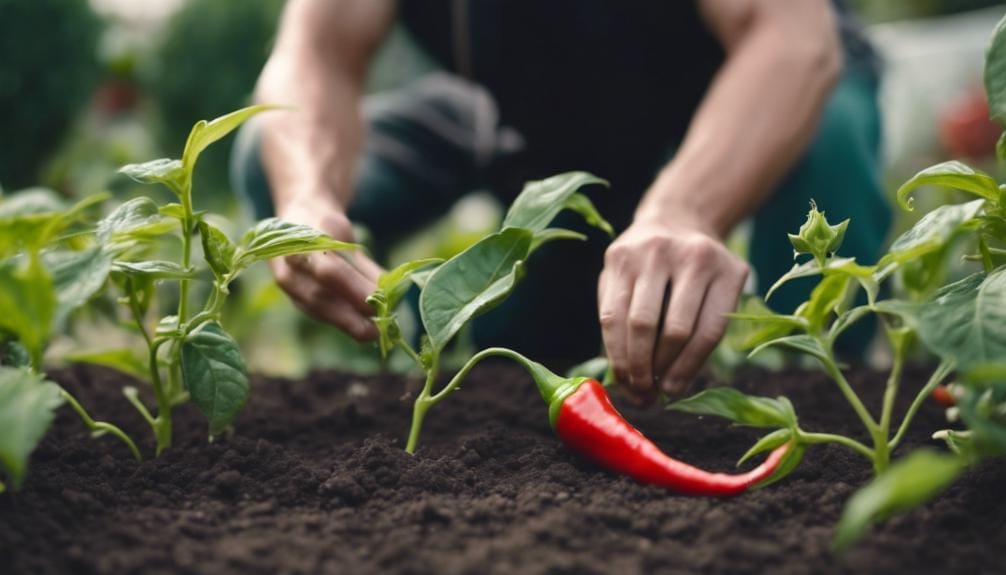
How can you ensure consistent nutrient distribution when applying fertilizers to hot pepper plants?
To achieve this, apply granular fertilizer evenly around the base of the plant. This method helps in delivering nutrients uniformly to the roots.
After fertilizing, make sure to water the plants thoroughly. This step is crucial as it aids in the effective absorption of nutrients by the roots.
Additionally, be cautious to avoid direct contact of the fertilizer with the stems of the hot pepper plants. Direct contact can lead to burning or damage to the plant.
It’s essential to follow the recommended dosage of fertilizer, as stated on the package, to prevent over-fertilization, which can harm the plants.
For young hot pepper plants, consider diluting the fertilizer to half strength to prevent nutrient imbalances.
Base Fertilization for Pepper Plants
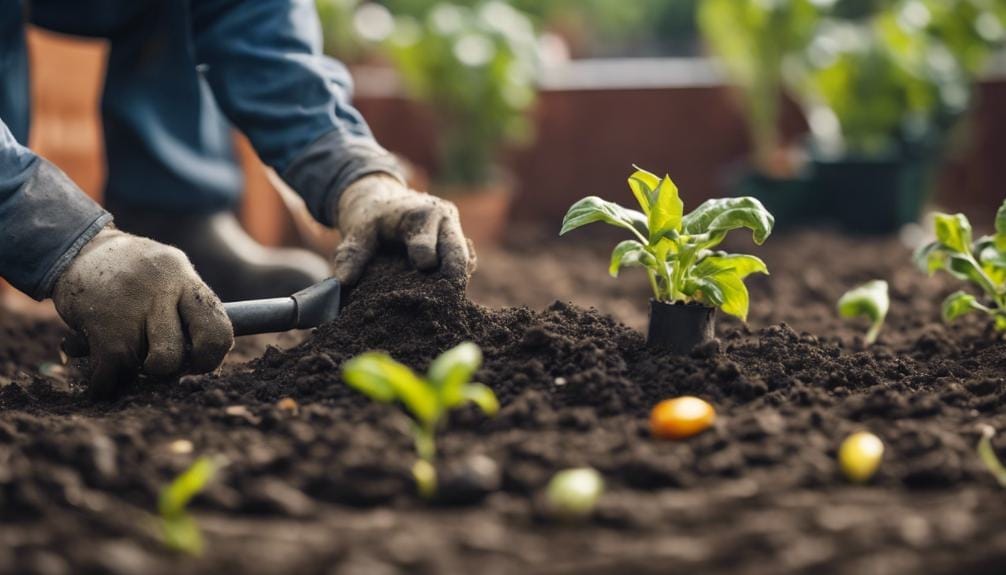
For optimal growth and fruit production of your pepper plants, start by applying a balanced fertilizer with equal N-P-K ratios at the base of the plants. The recommended N-P-K ratio for peppers is 5-10-10, which supports healthy growth and fruit production. Granular fertilizers are commonly used for base fertilization of pepper plants because they ensure even distribution of nutrients. When applying fertilizers, make sure to spread them around the base of the plants to avoid direct contact with the stems, which could lead to burning.
Base fertilization plays a crucial role in setting the foundation for your pepper plants to thrive and produce high-quality peppers throughout the growing season. By providing the necessary nutrients in the right proportions at the base of the plants, you’re ensuring that they’ve the essential elements required for healthy growth and abundant fruit production. Remember, a balanced fertilizer applied correctly at the base can make a significant difference in the overall success of your pepper plants.
Avoiding Over-Fertilization
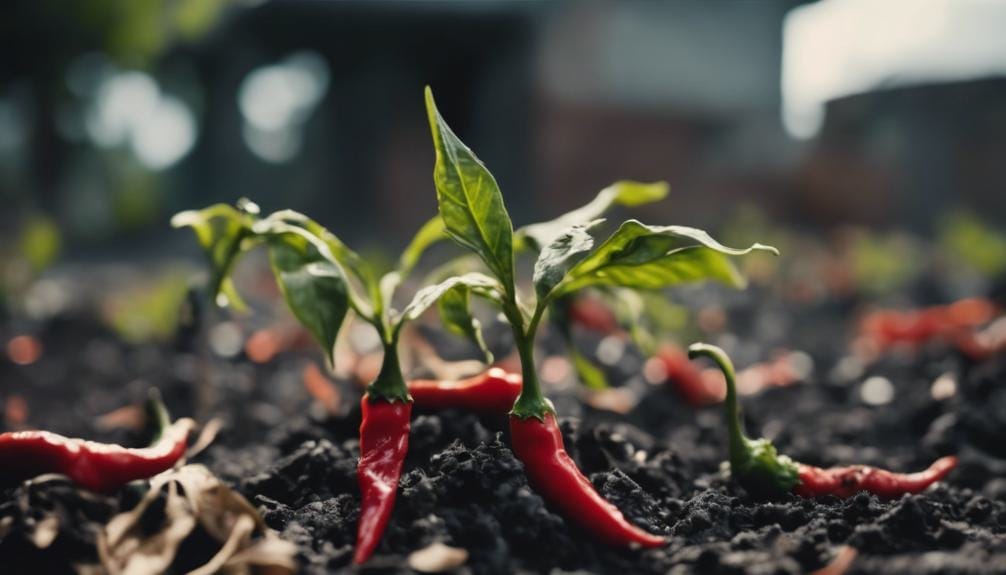
To prevent negative impacts on your hot pepper plants, be mindful of the risks associated with over-fertilization. Over-fertilization can lead to nutrient imbalances, stunted growth, and decreased fruit production in your pepper plants.
Watch out for symptoms such as leaf burn, wilting, and yellowing, which indicate stress on the plants due to excessive nutrients. Particularly, excessive nitrogen can cause lush foliage but hinder fruit development.
To avoid these issues, stick to recommended application rates, taking into account the specific needs of your plants. Monitor your hot peppers closely for any signs of over-fertilization, and adjust your fertilization practices accordingly based on their growth response.
Tips for Successful Pepper Cultivation

To ensure successful pepper cultivation, focus on selecting appropriate hot pepper varieties that match your climate and growing conditions for optimal growth and fruit production. Provide well-draining, nutrient-rich soil to create a favorable environment for hot peppers to thrive and prevent waterlogged roots.
Choose a sunny location with 6-8 hours of sunlight daily to promote robust growth and maximize fruit production. Mulch around hot pepper plants to retain soil moisture, suppress weeds, and regulate soil temperature, creating ideal growing conditions.
Enhance soil structure and fertility by incorporating organic matter such as compost or aged manure before planting hot peppers. By following these steps and paying attention to the specific needs of hot pepper varieties, you can set the stage for a successful pepper cultivation experience, leading to healthy plants and a bountiful harvest.
Conclusion
In conclusion, by following these 10 tips for planting and fertilizing hot peppers, you can ensure healthy plants and a bountiful harvest.
Remember to prepare well-draining soil, incorporate compost for nutrient benefits, address nutrient deficiencies, and monitor nutrient levels to avoid over-fertilization.
With the right care and attention, you can successfully cultivate hot peppers and enjoy a thriving garden.
Happy planting!

